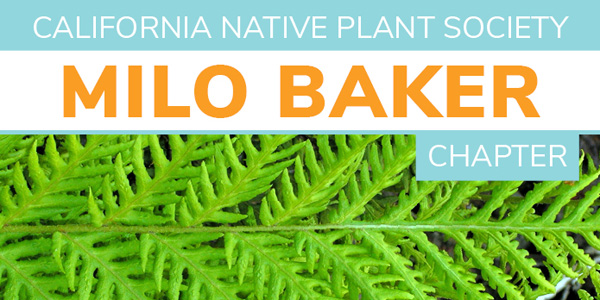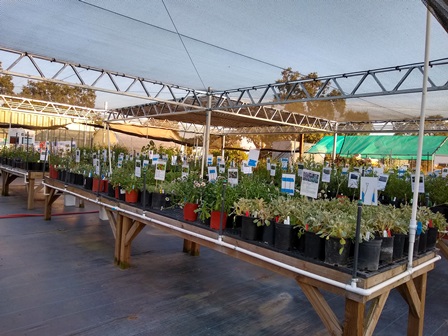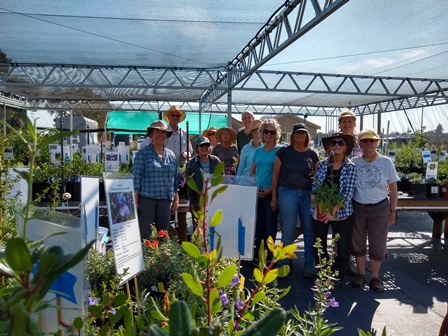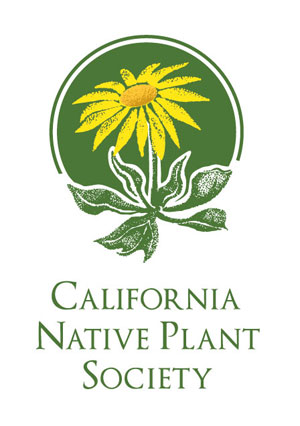|
California Native Plant Society
 |
| |
Why Invasive Plants Matter?
Evolution, Speciation and Management Strategies for Maintaining Biodiversity |
Jason M. Mills, M.S. Restoration Program Manager, Sonoma Ecology Center
Speaker Series, September 15, 2020 at 7:30pm via ZOOM |
This presentation will cover some of the bigger picture implications of invasive species and their impact on native ecosystems. We will then dive into some examples of especially problematic species, as well as some of the challenges facing local ecological communities in peril. Specific noxious weed prioritization and strategic methodology for controls will also be discussed. A topic of paramount significance will be to work toward closing the gap between those with advanced botanical skills and those tasked with performing the often strenuous work. Opportunities for collaboration and ways to get involved with active stewardship efforts in order to maximize biodiversity and resources will be the underlying goal of the talk.
Jason is a Restoration and Fire Ecologist, Botanist, Licensed CA Tree/Landscape Contractor, and Certified Ecological Restoration Practitioner with over 20 years of experience in the field. Jason developed his natural resource skills in the Bay Area through seasonal positions with land management agencies as well as private restoration groups, and went on to train and lead crews as a supervisor with the Conservation Corps. He later attended graduate school with coursework focused on the plant and fire ecology of California, receiving an M.S. with distinction for his thesis on Rx fire in California grasslands. Jason continues to research the effects of invasive plant control methodology in conjunction with restoration practices, and currently uses these skills to effectively guide the management practices on all of Sonoma Ecology Center’s Restoration Department projects.
|
|
|
|
| |
| Message from the Chapter President |
Last hopes for a ‘normal’ September activities calendar were dashed in August as local Covid-19 cases and deaths increased. A good portion of our membership is vulnerable and at high risk. Thus, our fun programs at the Luther Burbank Garden Center will not occur this month, but we will have a presentation hosted by Zoom (see above for details) and hopefully you will be able to attend.
This summer a few Board members have been more closely monitoring the State CNPS conservation efforts. There is renewed interest in assisting our chapter with Milo Baker Preserves. This is especially the case with Vine Hill Preserve which is the sole CNPS owned preserve in the state. Home to 3 rare plant populations, it has come under attack over the years by trespassers, neighbor activity and more recently, phytophthora. There will be more information on this in future months as plans are laid to manage this important property.
In other state news, the staff has been monitoring legislative efforts as the season wraps up in August. CNPS opposed AB 3279, which, as originally written, weakened the CEQA process, specifically how litigation proceeds. Working with other environmental organizations, the ‘bad’ provisions were removed and the groups ended up supporting the bill. On August 17 it was ‘held under submission’ in committee effectively killing it for this year’s session. As you may have read, the ongoing efforts to lobby BLM to designate Walker Ridge an ACEC (Area of Critical Environmental Concern) got a major boost when a public campaign was launched. Walker Ridge, while in Colusa and Lake Counties, has been often visited by our chapter members to see the amazing flora and habitats. This serpentine hilly ridge is best visited in late spring. Over the years there have been repeated efforts to establish wind farms and other development there. It is important to protect this area once and for all. For more information on how you can help visit www.cnps.org/conservation/protect-walker-ridge. Another area nearby, where our chapter has regularly visited is Guenoc Valley near the Napa/Sonoma border. A large project there is proposed with new vineyard acres, home sites and a huge resort. The state submitted a letter objecting to many issues not addressed in the plan. The plan will move forward, but CNPS may initiate a lawsuit to try to stop it.
Closer to home, our new co-chair of Conservation, Trish Tatarian has been active in letter writing. She will be reporting in a fall chapter newsletter.
Finally, we are all looking forward to an online plant sale in October. Please watch for evolving information on our website and in the next newsletter. Betty and her team of shade house workers have been potting up many gallons of lush plants. In addition our spring online sale has been an inspiration for other chapters to try the same in the fall. Betty has been a wonderful ambassador and resource for them. Perhaps before then we will see each other on the Speaker Series Zoom presentation.
Wendy Smit, Chapter President |
|
| |
| Cunningham Marsh Preserve Report |
Cunningham Marsh is home to the endangered Pitkin Lily, Lilium pardalinum ssp pitkinense. The location of the Marsh has always been noted as “in West County”, as it is a private preserve, with the conservation easement owned by California Fish & Wildlife, and the land owned by four homeowners.
This year we have been fortunate to work in coordination with the Laguna Foundation. They have been able to obtain two grants covering invasive removal at both Vine Hill Preserve and Cunningham Marsh. Under the leadership of Laguna staff Asa Voight and Sarah Gordon, plus volunteers from both CNPS and the Laguna, hundreds of hours of work have made a serious dent in the very invasive velvet grass (Holcus lanatus) investation. An extra thanks to Jan Lochner who on more than one occasion has worked 7+ hours pulling Holcus around the lilies!!!!!! With volunteers removing Holcus near lilies and Laguna staff, creating a perimeter clear of Holcus and Himalayan blackberries, the lilies are much happier this year.
Long covered lilies are starting to emerge and with a good wet winter, next spring could bring many surprises. The lilies had a good year in 2020…..the best in many years. This, we think was due to the invasive removal done this year, and the addition of hardware cloth to the bottom of our protective fencing around the lilies. Last year, many seedling and younger lilies were eaten by brush rabbits.
If the grant from US Fish and Wildlife Service-Species Recovery Program, is again funded this year, we hope they can eventually rid the 19 acre Conservation Easement of Holcus and blackberries.
For some additional information including the past history of Cunningham Marsh, go to milobaker.cnps.org to view an article by Betty Young, from June 2014.
Marcia Johnson
Steward, Cunningham Marsh, CNPS |
|
|
|
| FALL IS PLANTING SEASON IN CALIFORNIA |
|
| Plant Sale Update |
One morning in August, Wendy Born, Cindy Tancreto, Betty Young, Pat Sesser and I potted up 150 plants. They join over 2000 plants being grown for our fall plant sale. A core group of people have been propagating and growing plants in our shade house at the Laguna Foundation. We will have a fall plant sale, but it will be entirely different than any we have had before. Because of the Covid 19 quarantine, it will be entirely online. This is the first year that there has been no flyer, because the sale is online, there is no need for a flyer to post in your neighborhood to let the public know about the sale. All communication will be online.
Our members will be invited via email to order plants on October 7. When you order online you will be able to choose a day and time to pick up your plants at the nursery in Santa Rosa at the Laguna Foundation. There will be no deliveries. All orders will be placed in your vehicle when you drive up. Details will be posted on the plant sale page of our website. If you want to order plants, make sure that Susan Dean (cnpsmbmembership@gmail.com), our membership chair, has your email. I will write about some of our plants, but for a complete list, check our website- milobaker.cnps.org
Ferns I am excited about the number of plants that we will have. There will be a good selection of shade loving ferns such as sword fern (Polistichum munitum), deer fern (Blechnum spicant), five-finger maidenhair fern (Adiantum aleuticum) and a very special evergreen maidenhair, Adiantum x tracyi (a cross between five finger maidenhair and northern maidenhair).
Habitat Plants The sale always had a special table that featured habitat plants. I will highlight the plants that are especially good to attract pollinators and should have a special place in your garden. Hummingbirds, butterflies and bees love native plants. Atriplex lentiformis or quail bush (6’ x 10’) is a beautiful silver gray leaved plant that, although it doesn’t have showy flowers, is none the less a bird friendly plant. Birds like the flowers and the seeds.
Epilobiums, Snapdragons and Columbine Hummingbirds love the Epilobium canum (California fuchsia) and we will have four varieties: ‘Everett’s Choice’, ‘Canyon Coral’, Cloverdale’ and ‘Calistoga’ . All are low growing, spreading varieties with bright red flowers, except ‘Canyon Coral’ with toned-down orange/red flowers. Galvezia speciosa ‘Firecracker’ (Island Snapdragon) is a shrub with bright red flowers on arching branches. Aquilegia formosa (Columbine) is an early spring flower. Its orange and red flowers are entirely pollinated by hummingbirds. As a result, the Columbine sets many seeds and often reseed in the garden.
| Pipevine Two species that are closely allied with butterflies are the pipevine (Aristolochia californica) and the milkweed (Asclepias speciosa). The pipevine butterfly lays its eggs exclusively on the pipevine and the caterpillars feed exclusively on the leaves. Plant it and the pipevine swallowtail will find it and lay eggs. The Monarch butterfly has a similar relationship with the milkweed. Milkweed is essential to the life cycle of the Monarch. The caterpillar feeds on the leaves of the milkweed. |
|
|
Coyote Brush and CoffeeberriesIf you want a good, drought tolerant evergreen shrub, plant coyote brush, Baccharis pilularis. We are offering plants that are grown from seed. These can grow to 6’ or more. There will also be Baccharis ‘Twin Peaks’ or dwarf coyote brush which is a low growing form -2’ x 6’. Another good evergreen shrub is coffeeberry (Frangula aka Rhamnus californica). It can be planted in sun to light shade and has insignificant flowers that pollinators just love. We will have three varieties ‘Mound San Bruno’(4-5’ x 6’), ‘Eve Case’(7’ x 7’) and ‘Leatherleaf’( 6’ x 6’). We have also grown many coffeeberries from seed and they are very attractive with dark green leaves and red stems. All of them have large red to black fruits.
Toyons Heteromeles arbutifolia or Toyon is a very popular large evergreen shrub that can grow to over 12’. A member of the Rose family, it has a cluster of white flowers followed by red berries in the fall. A variety of Toyon called ‘Davis Gold’ has yellow berries will be available. I like “Davis Gold’ because it resists the leaf spot disease that can disfigure the leaves of regular Toyon.
Ceanothus Commonly known as California lilac, Ceanothus is a very popular California native for the garden. The CA lilacs are drought tolerant, hardy shrubs for a sunny location. All are vigorous growers, with blue flowers. They need occasional summer water, especially inland. We will have 6 varieties at our sale--‘Carmel Creeper’ (3’ x 12’), ‘Anchor Bay’ (low growing), ‘Concha’ (6’x 6’), ‘Dark Star'(6’ x 8’), ‘Kurt Zadnick' (3’ x 10’) and 'Skylark' (8’ x 8’).
Manzanitas We will have both varieties of Arctostaphylos hookeri (Monterey manzanita). Arctostaphylos hookeri ‘Wayside’ and A. h. ‘Ken Taylor’. Both are low growing ground covers that are drought tolerant and have white to pink blossoms and are long lived. ‘Wayside’ is the taller of the two.
| Salvias Check out the Salvias. Salvias are a genus that one can fall in love with and begin collecting different varieties to see how they grow. The ground covers S. x ‘Bee’s Bliss’ and S. sonomensis and S. spathacea (Hummingbird sage) will be available. There will be two Salvia clevelandii selections--S. ‘Winnifred Gilman’ (compact 3’ x 3’) and S. ‘Pozo Blue’ is the hardiest. Salvia brandegei-Brandegee sage (5’ x 7’) with dark green leaves and pale lavender flowers. Salvia apiana(white sage) (5’ x 5’) woolly grey leaves and long flowering stalks grows well in a full sun area with occasional watering during the summer. |
|
|
Other Perennials The sale will include an number of perennial plants as well. We'll have the low growing Aster chilensis. Two buckwheats, including Eriogonum grande rubescens (red buckwheat) and Eriogonum fasciculatum ‘Warriner Lytle’, a very low growing ground cover with white flowers. Helenium bigelovii, a yellow flowered sneezeweed. For the shade garden, Heuchera micrantha and H. maxima (commonly known as Alum Root) both have beautiful large leaves and white flowers on slender, wiry stems. Another member of the Saxifrage family is Tellima grandiflora (fringe cups) has a similar habit with evergreen foliage and flowers borne on a stalk.
Iris' The pure native Iris douglasiana is the only Iris that we will have. Two Phacelias--the ground cover P. bolanderi (woodland phacelia) and P. californica, a plant found growing on road cuts and canyons of Sonoma County. It grows with a low basal rosette of grey leaves with a stem with lavender flowers in a coil. Silene laciniata (Mexican Pink) is a spectacular plant with red flowers that can get up to 20 inches tall. Penstemon heterophyllus ‘Margarita Bop’ has very blue flowers and grows to 5 inches.
Succulents Dudleya farinosa (bluff lettuce) is a low growing succulent that made headlines last year when people were stealing plants from our coastal bluffs and mailing them to China! Apparently there was a huge market for them. Now you can grow this famous plant in your garden. We have grown many of them from seeds that we gathered on the coast. We also offer a similar succulent, Dudley caespitosa looks almost like D. farinosa and is also found on the Sonoma County’s coastal bluffs. Both flower with reddish stems and small yellow flowers in the spring.
Monkey Flowers Our sale wouldn’t be complete without monkeyflowers. The woody, drought tolerant Diplacus (formerly Mimulus) grows to about 3 feet. This year we grew them from seed so there will be no cultivars but instead we will have three the straight species: Diplacus aurantiacus (sticky monkeyflower) grows on our hillsides and has deep orange flowers and is very drought tolerant. Diplacus linearis is new to us and I don’t have a description to share. D. grandiflorous (azalea flowered monkeyflower) has large white flowers.
Grasses We are growing four grasses: Melica imperfecta, Melica torreyana and Festuca californica and Festuca californica ‘Serpentine Blue’.
Our California native plants are so important to the environment. They save water, attract pollinators, provide wildlife habitat, and they create a beautiful local touch to your garden.
Liz Parsons, Milo Baker Vice President
|
|
 |
| Our fabulous propagation nursery overseen by Betty Young, Nursery Manager. |
|
 |
| Wide selection of native plants awaiting the October plant sale. |
|
 |
| Our wonderful, tireless, Milo Baker nursery volunteers! |
|
|
|
Milo Baker Scholarship is Open!
If you know of any students at the Santa Rosa Junior College or Sonoma State University that are studying plants you should let them know about the Milo Baker Chapter’s scholarship opportunities. Our Chapter is looking to support students who are interested in learning about native plants or are engaged in study and/or research relating to native plant conservation, restoration, or other native plant studies. Milo Baker provides two types of scholarships: a merit scholarship for educational expenses and a research scholarship to provide funding for research-related expenses. Awards are open to students of Sonoma State University or Santa Rosa Junior College. Preference will be given to applicants who demonstrate a focus on Sonoma County flora or issues affecting plant communities of Sonoma County.
Merit Scholarships are awards up to $1,000 for students studying native plants, plant ecology, plant genetics, or related studies.
Research Scholarships are awards up to $3,500 for expenses related to plant research.
Applications are due by September 30, 2020.
For more information please go to the Milo Baker Website https://milobaker.cnps.org/index.php/about/scholarships or e-mail our Scholarship Committee Chair, Sean McNeil at seanmcneil0@gmail.com. Please note that is a zero after seanmcneil.
Sean McNeil, Scholarship Committee Chair
|
|
|
In the September Garden
The California Buckeye (Aesculus californica) knows how to slow down. I often chart the seasons by its cycle - the minute our summer dry climate ramps up the heat, this beautiful tree dries up and takes a well deserved nap. Throughout the year, Buckeye shows California’s subtle seasons from rich brown nuts in the fall to finger-like leaves emerging in early spring. The spikes of flowers are beautiful and attract an array of pollinators as well. In my experience- this tree is easy to grow, has a beautiful multi-trunk form, and likes a part-shade spot. California Buckeye works well as an understory tree in warmer parts of Sonoma County and can tolerate summer water or none at all after they are established. I like to use them in perennial meadows in West County above California Fescue (Festuca californica), Monkey Flower (Diplacus californica) and Alum Root (Heuchera micrantha) to name a few. Which will be available at our plant sale this Fall! - April Owens, Horticulture Chair
Sitting in a shady spot, I enjoy the colors of Solidago and Symphyotrichum chilense while watching the swirling dance of two orange butterflies. A dove feasts on seeds of the dried spring flowers. Chores can wait. - Anonymous CNPS Member
Please send us your garden observations and photos of how you live and garden with California naive plants. Let us know if we can feature your California native garden in our newsletter and social media for future months. Send us an email to cnpsmilobakerhorticulture@gmail.com or give April a call at 707.331.2070. We will be happy to come take some photos of your garden and have a Covid-19 safe tour. Happy Gardening!
The CNPS Milo Baker Communications Committee
|
|
|
| 2020-2021 Milo Baker Board Members |
|
President
|
Wendy Smit |
707-481-3765 |
wsmit8000@gmail.com |
| Past President: |
Leia Giambastiani |
707-322-6722 |
leiagia@gmail.com |
| Vice President: |
Liz Parsons |
707-833-2063 |
lizpar8993@aol.com |
| Secretary: |
Kerry Wininger |
707-888-5616 |
kerrywininger@gmail.com |
| Treasurer: |
Jim Piercy |
707-539-3441 |
terrapenecarolinamajor@yahoo.com |
| Conservation Chair: |
Sean McNeil |
707-480-2965 |
seanmcneil0@gmail.com |
| Director at Large: |
Trish Tatarian |
|
|
| Director at Large: |
Cody Ender |
|
codyender@gmail.com |
| Director at Large: |
Natasha Granoff |
|
|
| Plant Walks: |
Ruthie Saia |
707-322-7462 |
ruthiegardengirl@gmail.com |
| Horticulture Chair: |
April Owens |
707-331-2070 |
cnpsmilobakerhorticulture@gmail.com |
| Hospitality: |
Karen Thompson |
415-786-6788 |
ket@sonic.net |
| Hospitality: |
Liz Parsons |
707-833-2063 |
lizpar8993@aol.com |
| Invasive Plant Chair: |
Jan Lochner |
707-569-4724 |
4lochs@comcast.net |
| Membership: |
Susan Dean |
|
cnpsmbmembership@gmail.com |
| Newsletter Editor: |
Caprice Disbrow |
707-322-5119 |
cnpsmbnewsletter@yahoo.com |
| Outreach Co-Chair: |
Virginia Hotz-Steenhoven |
707-528-6030 |
vsteenhoven@sonic.net |
| Outreach Co-Chair: |
Catherine Lipson |
|
clipson@berkeley.edu |
| Plant Sale: |
Liz Parsons |
707-833-2063 |
lizpar8993@aol.com |
| Programs/Lectures: |
Virginia Hotz-Steenhoven |
|
vsteenhoven@sonic.net |
| Nursery/Garden Tour |
Betty Young |
707-595-1463 |
youngb0721@msn.com |
| Publicity: |
OPEN |
|
|
| Sales Chair: |
Judith Rousseau |
707-326-6454 |
jrousseau12@hotmail.com |
| Website: |
Natasha Granoff |
|
cnpsmb.webadm@gmail.com |
| SCCC Representative: |
Wendy Krupnick |
707-544-4582 |
wlk@sonic.net |
| SRJC Representative: |
Forrest Horobin |
|
|
| SSU Representative: |
OPEN |
|
|
| Vine Hill Preserve: |
Sarah Gordon |
707-833-1243 |
sarahpgordon@gmail.com |
| Southridge Preserve: |
Michelle Karle |
|
michelle_karle@hotmail.com |
| Rincon Ridge Park: |
Michelle Karle |
|
michelle_karle@hotmail.com |
| Cunningham Marsh: |
Marcia Johnson |
|
owlsnesttwo@att.net |
|
|
|

|
|
|

|

|
|


